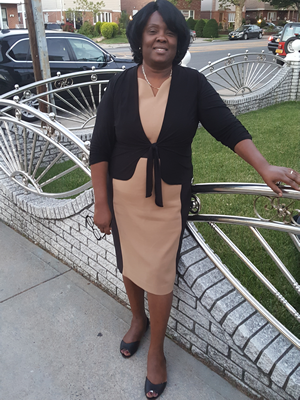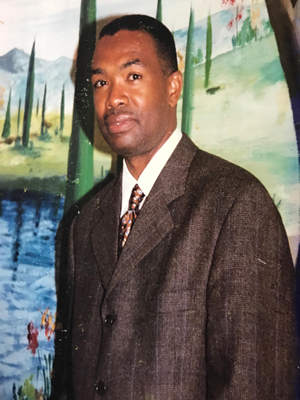The Science of Safety
Science of Safety is the foundation of Assault Prevention. We created this concept (SOS) to differentiate ourselves from others in our field.
Traditionally, people who are interested in information related to personal safety and security turn to the field often referred to as the safety or security industry. This field has served multiple purposes for many years. However, the industry as we know it has a checkered reputation. This industry hosts bodyguards, private uniform security guards, defense contractors, executive protection agents, retail theft specialists, and a variety of self-defense, tactical, and security instruors. Unfortunately, it has become very difficult to differentiate the credibility and quality of these people. Most of these entities would much sooner sell you their on-going services than teach you appropriate principles you can apply and carry forward on your own.
We have reached a point in research and technology where we can be reasonably certain of the outcome of many variables; hence the Science of Safety.
For example, we know from years of research that 85% or more of self-defense shootings occur in low light or darkness. We find it rather remarkable that many states do not require low-light shooting as part of their qualification test for civilians to obtain their permission to carry a handgun.
Additionally, we know the statistical probability of pointing a firearm at someone, much less pulling the trigger, is highly unlicuntarily. It is much more likely a person may have to apply force using their hands against an adversary who attacks. Why then, all the media emphasis on handguns and carry permits? We do believe in preparing for the worst case scenario, but our focus is on what is more likely rather than the improbable.
We know that there are assessments available in which, if appropriately trained, a lay person will have just as much success as a mental health professional in determining the likelihood of violence. Should Human Resource Departments use these assessments?
These are just several indicators the traditional safety and security industry is out of step with the realities of research and is disconnected from real life. This is our driving motivation; to present relevant, realistic and practical information.
All of our services are built upon years of respectable research in the areas we provide services including violence, human behavior, science, physics, learning theory and common sense.
Have you even been in a car accident? If so, you probably did not leave the house planning to have an automobile accident that day. That is how violence erupts into our lives. It is spontaneous, unexpected and quick. No crime victim ever thought they would become a victim on the dreadful day they became one.
We do not like to think about it. But crime and violence rears its ugly head daily through our media outlets. When we consider the most horrific of these cases, who, at one time or another, has not asked themselves;
• "I wonder what that must have been like for the victim."
• "If that was me, how would I have reacted?"
• "What could I have done to avoid that situation?"
According to statistics released by the Bureau of Justice Statistics National Crime Victimization Survey, United States residents age 12 or older experienced approximately 23 million crimes. This figure includes all categories of crime. Therefore, you have approximately an 8% chance of being a victim of crime in a country of approximately 300 million people. The trick, of course, is to stay out of that 8% category. How does the average citizen prepare for this? Unfortunately, many people do not give it much thought, or do not know what they should do. Additionally, Americans are experts at denial. If you need proof just look at the amount of debt most Americans carry, or the national debt.
Using a more practical example, the National Highway Traffic and Safety Administration reports there were 38,588 fatal crashes in 2006. Looking into these statistics more closely;
• 22,830 of the victims were drivers.
• 9,156 were passengers.
• 4,810 were motorcycle riders.
• 106 are categorized as unknown.
• Of the total fatal crashes 13,723 occurred between the hours of 9:00 pm and 6:00 am.
• 68% of these crashes were at speeds of 45mph or greater. As speed increases, so does the risk of a fatality in a crash.
• Almost 75% of these crashes were on 2-lane roads, the bulk of them on undivided roads.
• In terms of alcohol: 49% of single vehicle fatal crashes were alcohol related.
• In terms of alcohol: 30% of multiple vehicle fatal crashes were alcohol related. Within this category, 68% were between the hours of 6:00 pm and 6:00 am.
• Seat belts save approximately 13,000 lives in the United States each year. An additional 7,000 fatalities could have been avoided having the victims been wearing seat belts. Total fatalities could drop by approximately 18%, if these victims had been wearing seat belts.
• By all estimates, wearing seatbelts reduce the risk of death for a front seat vehicle occupant by 50%.
Using these statistics can be helpful in reducing the personal risk of becoming the victim of a fatal crash.
Recommendations based on the statistics presented above:
• Wear a seat belt.
• Do not drink and drive.
• To minimizeize alcohol related fatal crashes, minimize vehicle travel between the hours of 6:00 pm and 6:00 am.
• To reduce all fatal crash risk, minimize vehicle travel between the hours of 9:00 pm and 6:00 am.
• As much as practical avoid two-lane, undivided roads.
• Drive at slower speeds.
Look at the statistical facts. How much risk has been reduced by using these strategies?
We can use the same type of methodology in reducing the risk of becoming a crime victim.
This is the Science of Safety.
Perception is most peoples reality. However, perception may be far removed from reality. This is why the effort of considerable research into crime trends, criminal hits and real-life violence characteristics are valuable. As a result, we are able to recognize valid and reliable conclusions that will effectively reduce daily risk, rather than making faulty claims based on inaccurate perception.
Avoiding victimization is a thinking persons game. Reducing the risk of becoming a victim of crime does not require the average person to become a black belt in martial arts, a sharpshooter or a skilled weapons artist. The primary consideration in crime victimization is how you recognize and process the world around you. Unfortunately, many people walk around somewhat self-absorbed in their own little bubble. By doing so, they miss important environmental and behavioral clues that are available to make good cognitive decisions regarding their safety.
Being aware of these clues and processing that information properly is much more significant to your safety than being adept at motor skills training (self-defense). Preparation through proper training and learning what it is you should be paying attention to can reduce the daily risk we all face. Here are some simple precautions to take into your daily life:
1. Having someone else with you reduces the risk of personal violence by up to 80%.
2. Having a third person with you reduces the risk of personal violence by up to 90%.
3. Learn to say no, emphatically, to a stranger who approaches you, regardless of their story.
4. Be aware of your surroundings. If you need help, you choose what you will ask. You are far less likely to randomly pick a person wanting to do you harm, than waiting for someone to approach you.
5. In public areas, look around your vehicle as you approach it. Look into your vehicle before you get into it. When out at night, park in a well-lighted area.
6. When at home, park in the garage if you own one. Scan the garage before you close the garage door. Although not a common tactic, assailants will wait in hiding and enter through an open garage door.
7. If you own a cell phone and feel you might be in a place that puts you at risk, have it pre-dialed to 911 or the local police telephone number. Then if you do need to call for help, just push the call button.
8. If you are approached, do not let a stranger come within two-arms length of you. Assailants must control victims in order to successfully complete their crimes. If the assailant can not grab, hit, stab or kick you – their ability to control you is greatly reduced.
9. Never, ever, allow yourself to be taken to a secondary location should you be confronted by a potential assailant. Assailants look for privacy to successfully victimize people, and sometimes that involves taking the victim to a secondary location. Fight where you stand! Statistically, you are far better off than being taken to a secondary location.
Much like the example we used in fatal car crashes, these recommendations are a result of studying solid research in the areas of crime victimization, criminal behavior and characteristics of specific crimes.
In the area of individual training for personal protection the amount of dollars spent on achieving a designated rank in a martial art is typically around $ 5000. It requires years of practice to create fine motor skill reactions which are generally unrealistic in real world application. As AP has demonstrated through years of course training, refinement, and field testing, an individual with no military, martial arts or self defense training that can complete an appropriate self defense course and be proficient to the 90th percentile of all personal threats and vulnerabilities that they will ever encounter, and do so on the basis of solid legal precedent of case law. This creates a very scientific approach, but it is entirely dependent on the type of course. In fact, it has created a whole new industry which is heretofore been referred to as the Science of Safety (SOS) Industry.
Undeniably, as we enter a new era in terrorism and criminal behavior the responsibility of security is falling on the private sector, and creating a significant need for the privatization of services. Individuals and organizations are expected to be prepared.
How can appropriate preparation take place without sacrificing significant time, while insuring that preparation is relevant, professional and utilizes a holistic, proven system? As AP continues to explore the essential needs of the community, and as the community increasingly realizes its need for this protective perimeter, AP is leading the way in providing the solution.
© 2008 Terry Hipp
Source by Terry Hipp













 Hits Today : 423
Hits Today : 423 Total Hits : 746363
Total Hits : 746363 Who's Online : 1
Who's Online : 1